14. There Will Be Blood (2007)
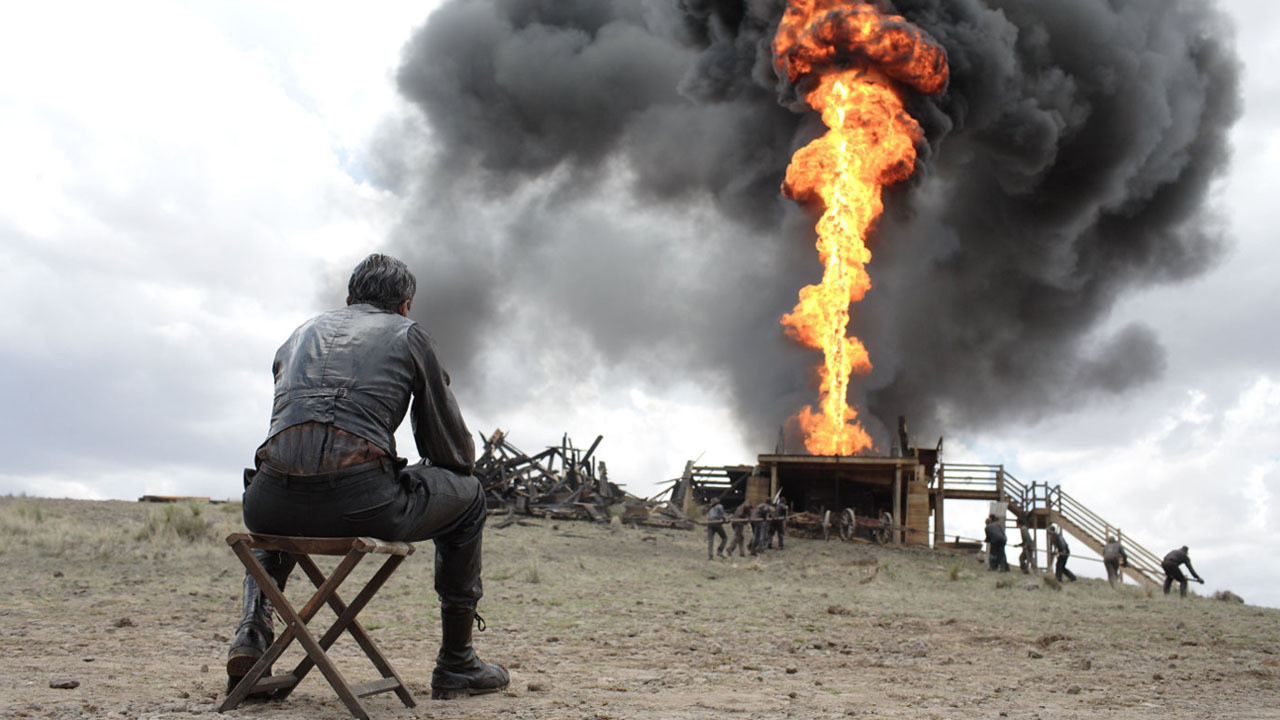
Paul Thomas Anderson’s masterpiece “There Will Be Blood” rises graciously on the locale of never-to-forget cinematic creations, due to its sincerity, raw beauty and indestructible value.
Nature offers plenty of gifts to men. They need to stretch their hands and grasp them. This precise point commences the eternal matter of capitalization, establishment of boundaries and segmentation.
“There Will Be Blood” elaborates on such a ceaselessly unresolved issue and generates penetrative wonders about the primal bond between men and earth; they can either enjoy with wisdom the treasures originating from the ground, or alter these treasures to poisonous fumes, led by an innate, greedy force.
The brilliant cinematographic approach glorifies the optical depiction of the film’s subject, peaking at the scene where an oil derrick bursts into flames. Daniel Day-Lewis takes a chair and watches the spectacle. There is nothing to do when an inextinguishable fire rages in the middle of a barren land but to stand and speculate.
13. The Turin Horse (2011)
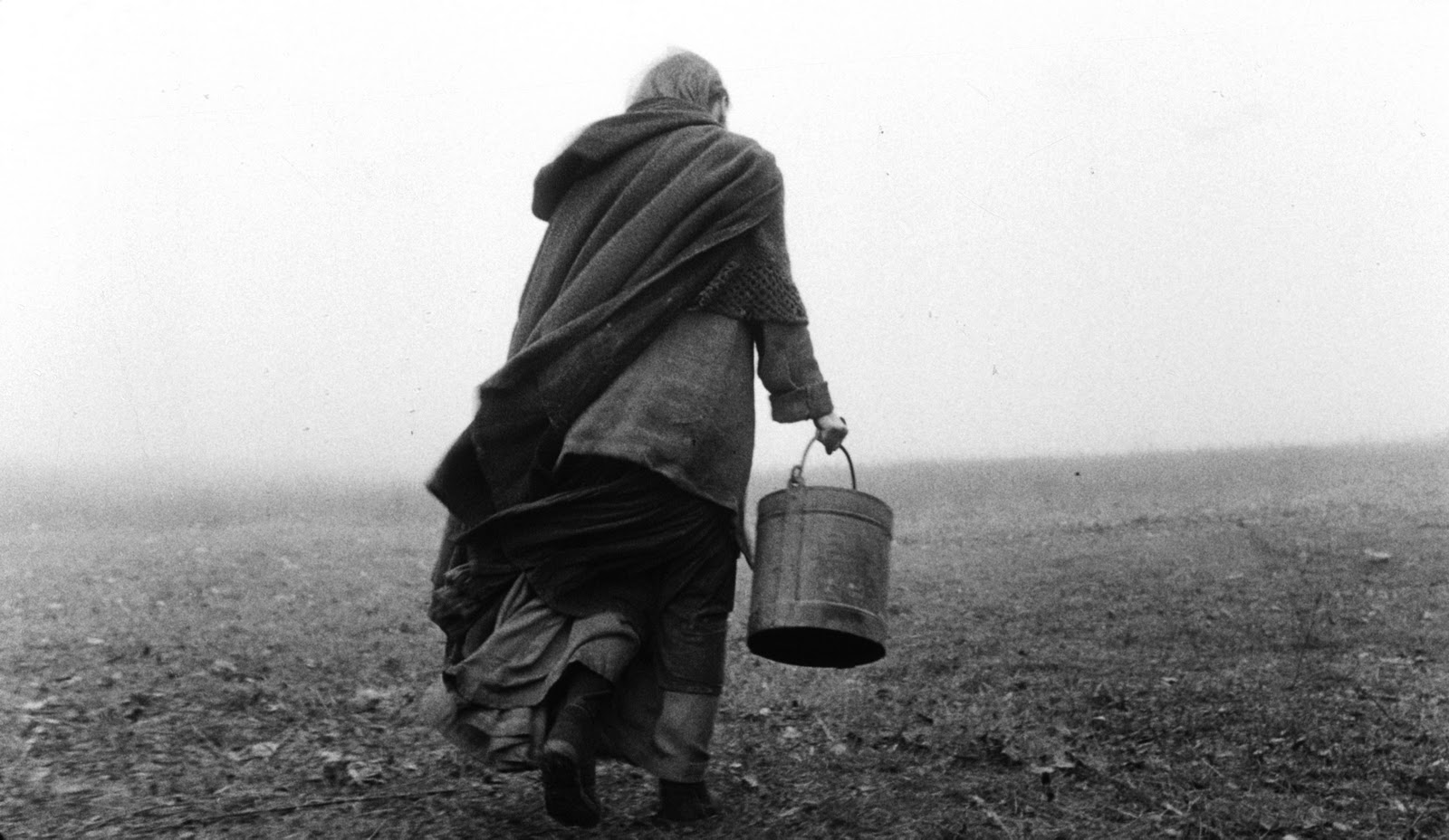
Béla Tarr’s last film depicts six days of the symbolic life that an old peasant and his daughter endure in a deserted field. Their only weapon to survive is a crippled horse. Each day is synthesized by three eight-minute one-shots. “The Turin Horse” is noted for its remarkable directing style and philosophical mood that arises from a total of lengthy, atmospheric scenes.
All along these six days, nothing important happens in the small hut where the father and daughter live. The man takes the horse and moves through the desolate land. His daughter’s task is to fill two bins with water. These two humans seem to be completely aimless, ceaselessly carrying the heavy load of their existence. As an ironic response, nature appears to be enraged. Unstoppable wind and snow cause a haunting noise and presage a biblical disaster.
During the most terrifying scene, the girl is walking endlessly in this hostile place that is preparing to terminate every vice or inhumanity dominating for ages. She is heavily dressed, but it’s not enough. This world is led to its disintegration. Her father is watching the furious ritual of nature through the hut’s window.
12. The Suspended Step of the Stork (1991)

Greek cinema has been essentially defined by Theo Angelopoulos, a pure artist who had looked thoroughly into several inexpressible panhuman issues in his own, one-of-a-kind lyrical way. On a smaller scale, he dealt boldly with Greek social pathologies and stereotypes that even currently appear in a more sharp and violent form than ever.
One of his main subjects has been the visionary and materialistic concept of borders. The quintessence of this matter is reflected on the emblematic scene of his film “The Suspended Step of the Stork,” in which a man hovers on the edge of a drawn border between two countries. This simplistic move is a witty answer to the humanly devised limits and moreover, it is a poetic depiction of the deep need for freedom and unity. This scene is meant to touch the most sensitive chords of a soul.
Even though Angelopoulos departed from life prematurely without completing his artwork, he left behind plenty of valuable cinematic creations, including scenes of immortal artistic beauty, and he even contributed to the societal and cultural progress of Greece.
11. Youth (2015)
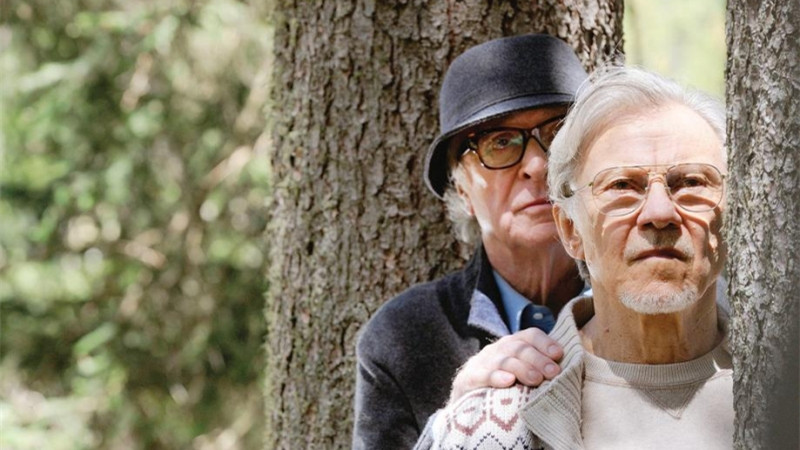
Beauty can be reflected in many aspects of life: in nature, in friendship, in memories, in love, in a female body, and more crucially, in youth. Paolo Sorrentino, in his authentically romantic film “Youth,” makes a consideration of the multifaceted role of beauty in life and conclusively demonstrates the undying, inherent need to discover beauty in every grain of this world.
Two successful, middle-aged friends meet each other at a resort in the Alps and find themselves in the ideal circumstances to think about their past years of joy and creative heat. The two men are clearly preoccupied by an undimmed feeling of nostalgia, and subconsciously, they are facing the bitter realization that youth is beauty, because beauty is the life itself and there is not much of life left for them.
While the two friends are relaxing in a swimming pool, carried away into the maelstrom of their memories and insatiable yearning, something magical happens: The most beautiful woman in the world, who spends her holidays at this very resort, enters the room naked and dives into the pool. Her absolute beauty overwhelms the senses of the old men, seeming like a divine temple of immortal youth to their eyes.
10. Wings of Desire (1987)
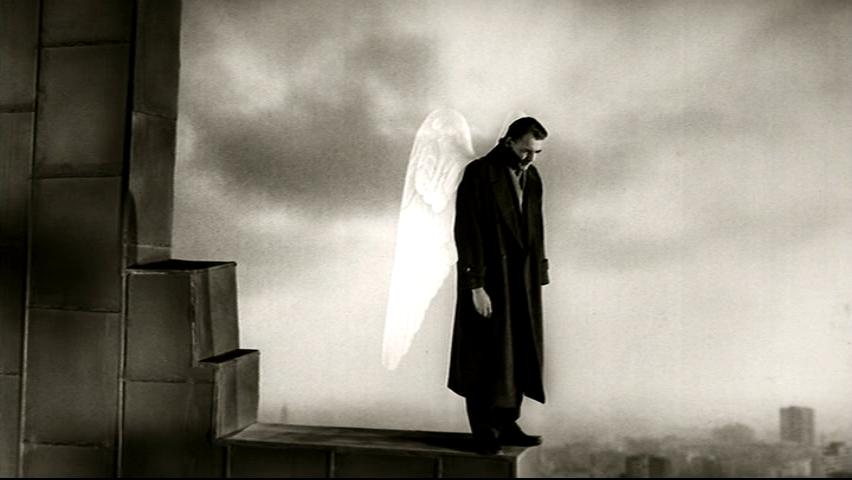
An angel ready to leave the sky and fall into the noisy and overwhelmed reality due to his love for a woman is one of the most beautiful and melancholic pictures ever created by a human’s imagination. Henri Alekan portrayed this allegorical mental image in one of the most graceful scenes arising in the film “Wings of Desire.”
Wim Wenders’ “Wings of Desire” is a source of pain and pleasure at the same time: the angelic creatures depicted in this movie represent two eternal, solitary existences that constantly hear everyone’s thoughts. The unavoidable effort of the audience to follow these angels and watch the world from their point of view is painful. Still, the beauty of this film is original and flawless, engendering an extensive emotional influence.
Although Wenders, together with Alekan, have succeeded in making a projection of our harsh world through an angel’s eyes, the distant overview of this angel right before he lands on earth is predominant. He is an otherworldly man, determined to abandon a granted heaven in order to share a chaotic and mundane life with a soulmate.
9. Blade Runner (1982)

Science fiction’s primal pursuit is the insight into existential purposes and spiritual forces. “Blade Runner” is one of the most comprehensive artworks of science fiction, attempting to investigate the blurred characteristics defining humanitarianism and all of its prospective reflections.
The futuristic world described in “Blade Runner” could be perceived as quite contradictory. It’s a world busy but silent, too fast but still, advanced but primitive, and in principle, it’s a world crowded but lonesome.
People have been able to create genetically artificial creatures of their species. Even though the creators are against the androids and vice-versa, the actual differences between them have become indistinct. Humans can be decent and relentless, and if they created androids, they would also be decent and relentless. Every creation of humankind has always been in its image and after its likeness.
Roy Batty is an android chasing his creators. He has many reasons to kill one of them, but he doesn’t. He is half-naked in the rain, holding a pigeon in his hands, and looks acutely through the foggy and bleak atmosphere of this world. The scene is terrifyingly beautiful. He has seen things that humans wouldn’t believe, he said. Still, this world is scary but lovable for him. Roy has a heart, even a hope; a white hope, able to fly away. Roy has been made by humans.
8. Cries and Whispers (1972)
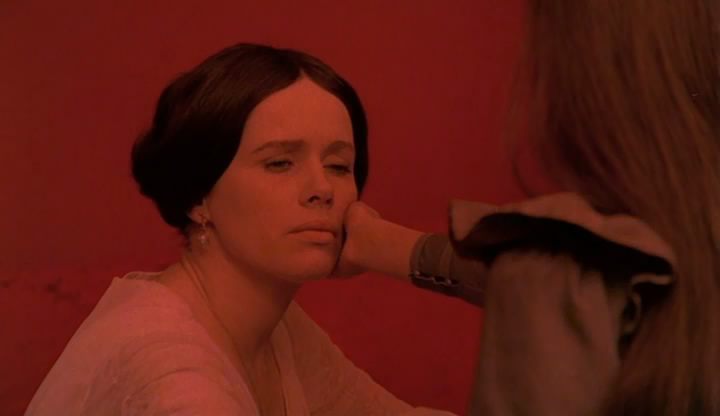
Three middle-class sisters gather together in their paternal home due to the fatal illness one of them is fighting. Even though Agnes (Harriet Andersson) is dying from cancer, she is not the only one fighting an emotional battle: both her sisters, Maria (Liv Ullmann) and Karin (Ingrid Thulin) are facing internal demons and seem to be far from the sources of pleasure and alleviation that they seek.
In the contrary, since Agnes’s weak body and mind are aware of the forthcoming and unchangeable death, she accomplishes a mental trip to the best of her memories. Raking up the years of joy and serenity, Agnes manages to reach the higher stage of purification, despite the deeply mournful, even pathological ambiance of her home.
Right before giving up to death’s wills, Agnes is once again a pure child, reclined in her mother’s arms. While her sisters are still lost into their worldly troubles, she surpasses her perishable foundation and approaches her inner, virginal substance. This picture, intensively referring to “Pieta,” is the most beautiful picture created by Sven Nykvist in Bergman’s absolutely stunning film “Cries and Whispers.”
Pain, repressed anger and mortality are some of the main subjects of interest in Ingmar Bergman’s filmography. Although “Cries and Whispers” could be one of the darkest and most dolorous of his works, this scene is the point of decompression that leads to catharsis.